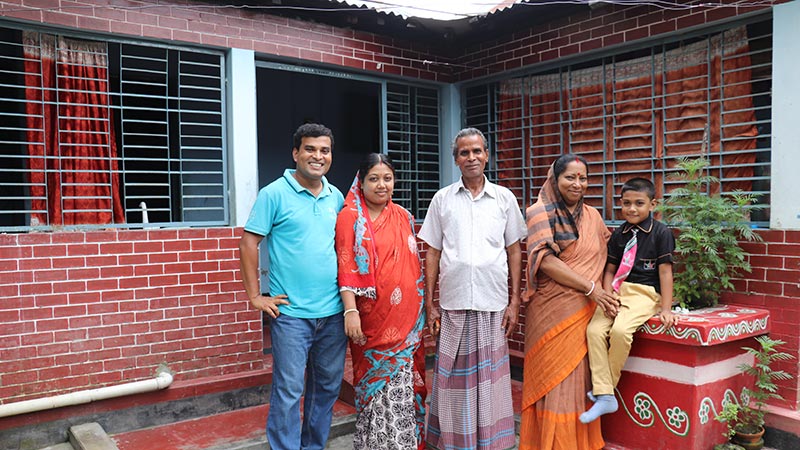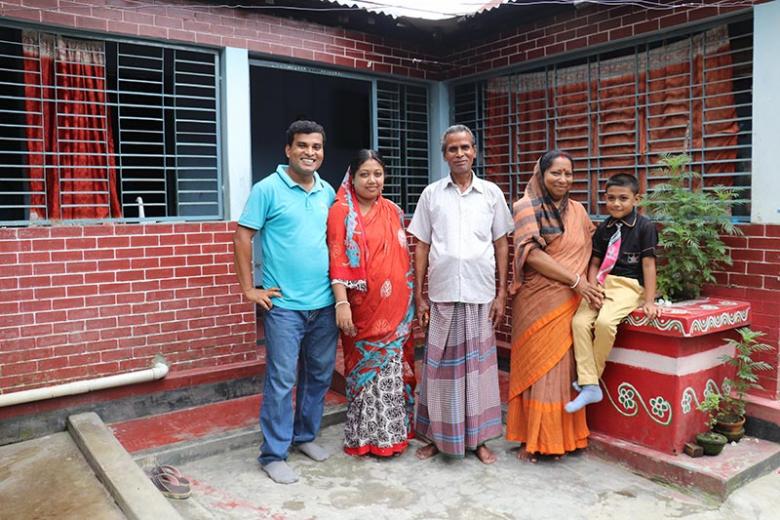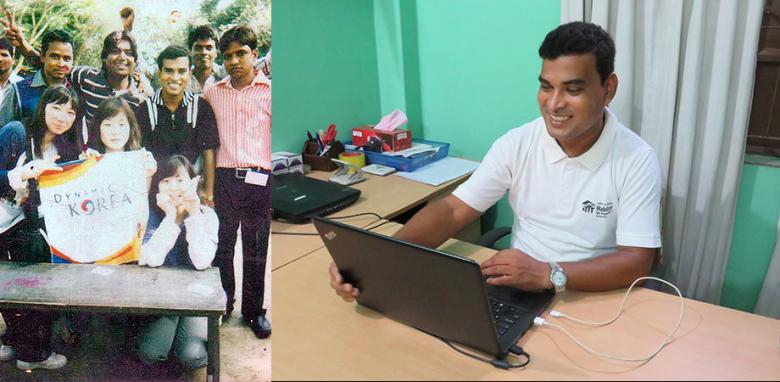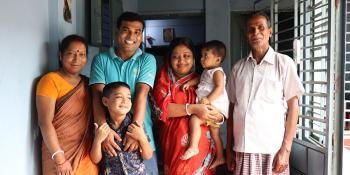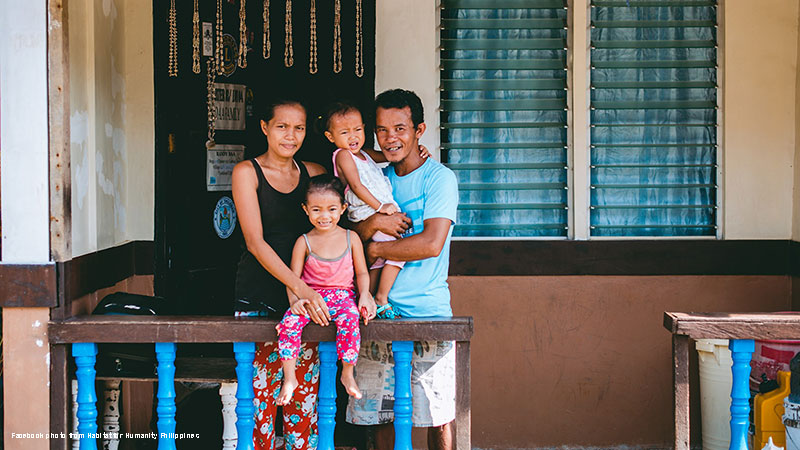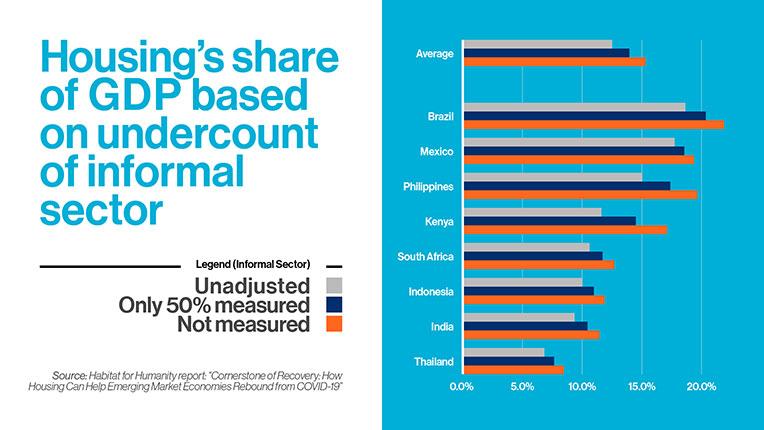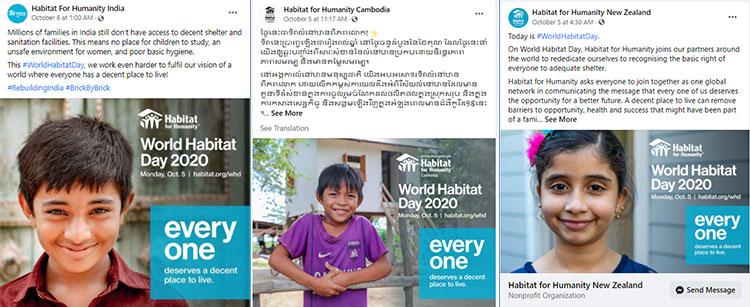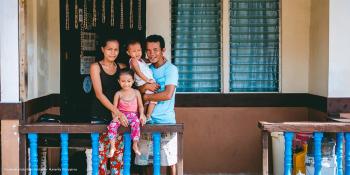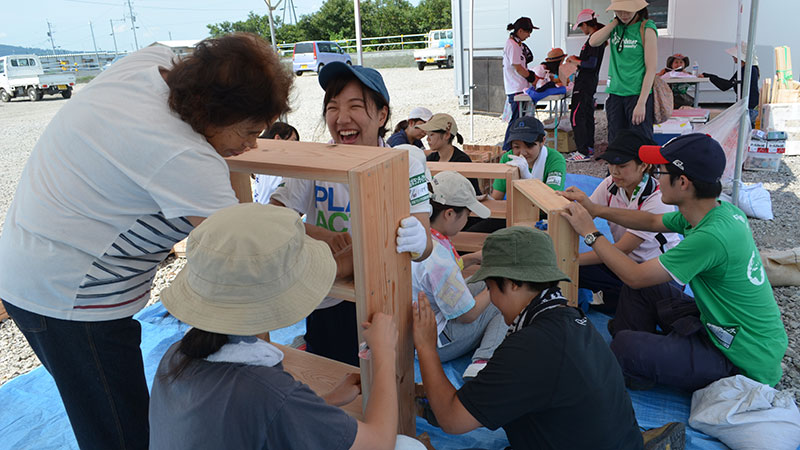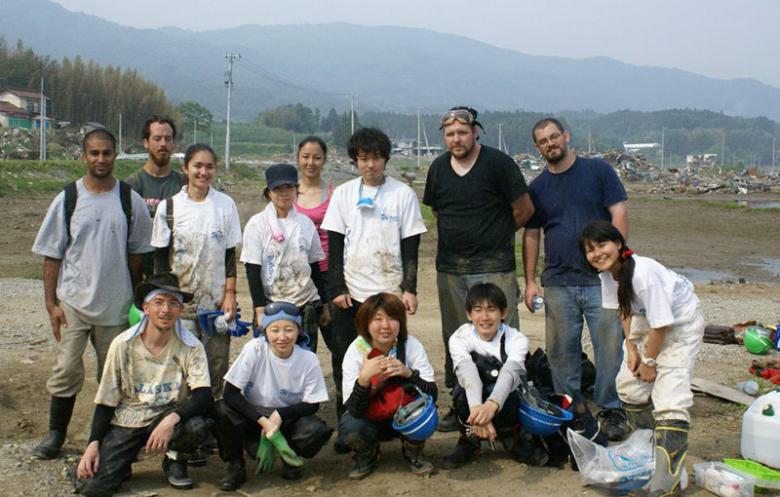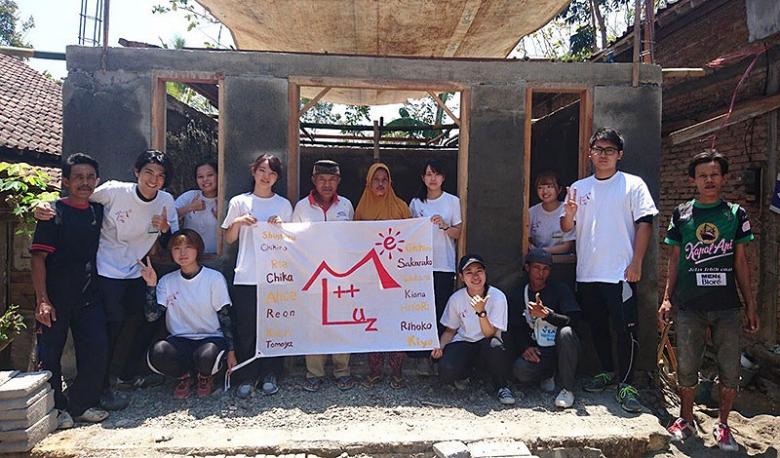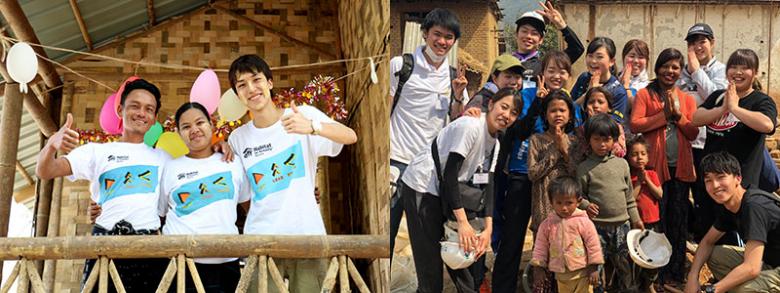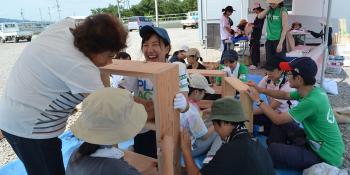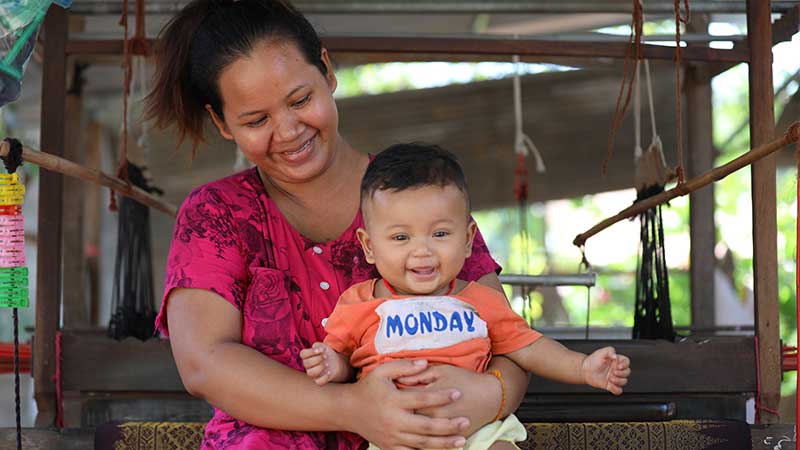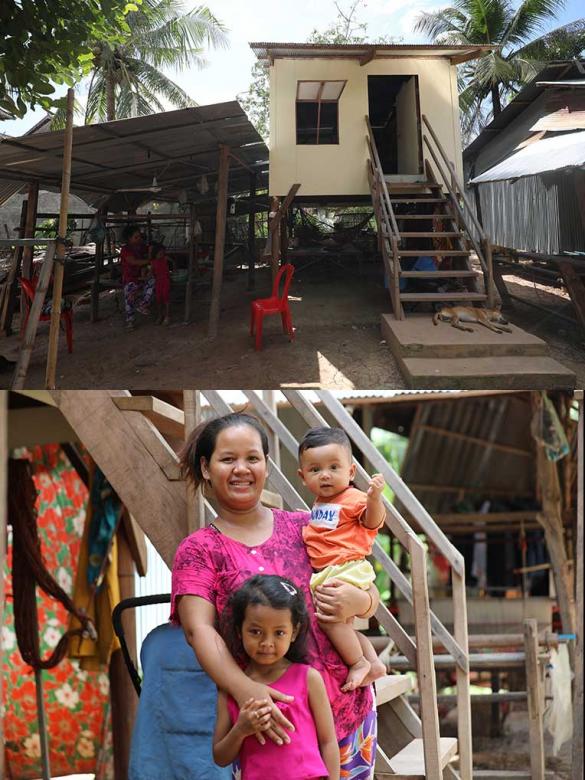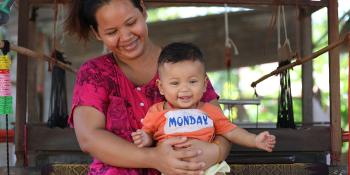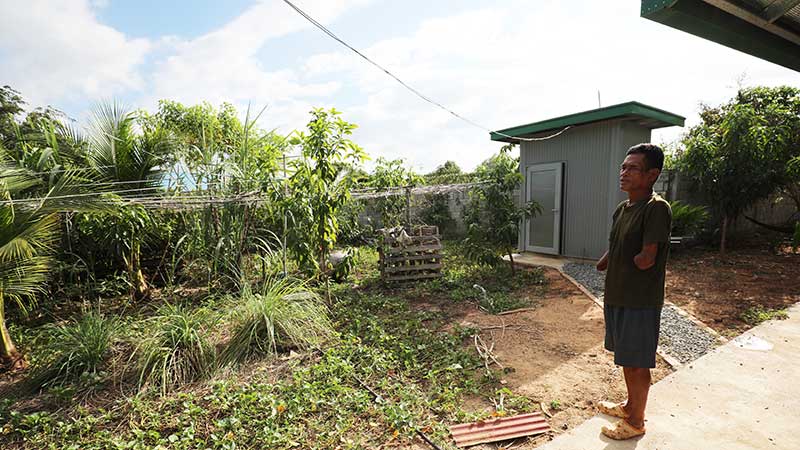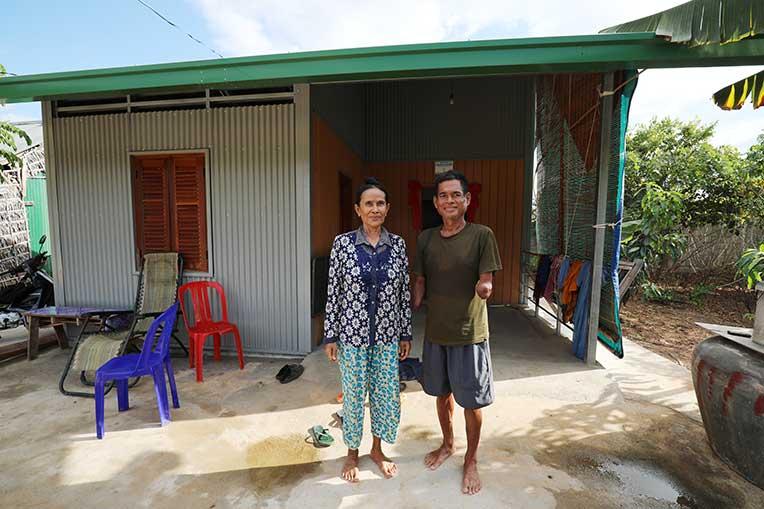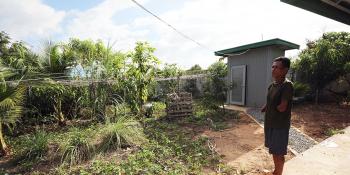Youth leaders kick off campaign
Without the typical in-person activities, youth leaders tapped into social media to raise awareness and rally their peers in support of the cause for decent housing.

MANILA (January 14, 2021) — Young leaders showed strong support for the 2021 Habitat Young Leaders Build campaign despite the tenth annual edition being launched in a new normal. Without in-person activities — characteristic of previous campaigns launched on International Volunteer Day, December 5 — youth supporters tapped into social media to raise awareness and rally their peers to support the cause of decent, affordable housing.
‘X’, the roman numeral for ‘10’, was aptly used in social media graphics for the campaign’s largely virtual launch. More than 400 posts with a total reach of almost 630,000 online audiences were registered on December 5 alone. Besides using a custom Facebook frame, supporters shared photos and stories online to highlight the positive impacts of decent housing on families and communities as well as the benefits gained from volunteering on Habitat builds.
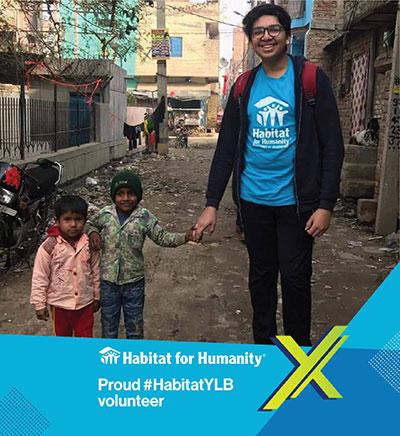
“Being part of a house build was undoubtedly a life-changing experience. Habitat India volunteers were way more fun and helpful than I imagined. It’s definitely an organization that’s by the people, for the people and of the people.” — Armaan, India
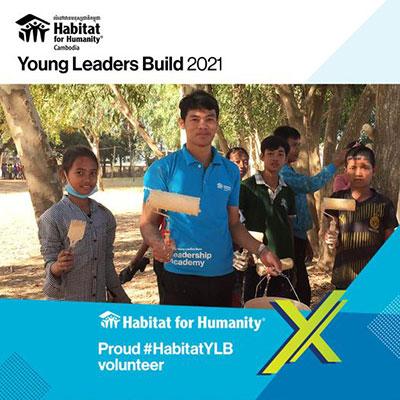
“I learned how to facilitate and lead the youth to implement community-based projects...My favorite part of volunteering with Habitat Cambodia is sharing what I have learned from the HYLB Leadership Academy and my experiences with the youth and students in high schools.”
— Chy, Cambodia
Other activities included:
JAPAN: Habitat’s campus chapters organized an online educational series on Habitat’s work and the Sustainable Development Goals and discussions on volunteer safety as well as volunteering virtually.
SINGAPORE: a total of 26 volunteers from the Hwa Chong Institution, Raffles Institution and Yale-NUS Habitat campus chapters helped five older people to clean their homes during a Project HomeWorks activity.
INDIA: more than 1,700 participants cumulatively ran more than 10,000 kilometers in 10 cities during ‘VolRUNteer.’ The event was organized by Habitat India to raise awareness of the campaign as well as funds for its response to the COVID-19 pandemic. Since December, over 50 young leaders have raised at least 100,000 Indian rupees (over US$1,300) each through ‘VolRUNteer’ and crowdfunding sites.
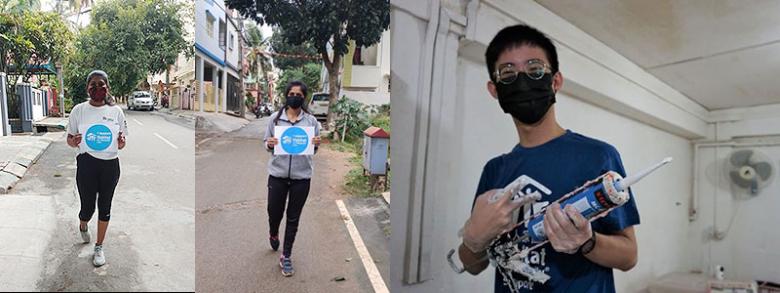
In India, not only did Habitat staff member Srichana (left) and her younger sister Yashaswini (center) in Bengaluru take part but they also inspired nine more young people to take part in the ‘VolRUNteer’ activity. Over in Singapore (right), a volunteer was among others who helped clean up homes under Project HomeWorks.
INDONESIA: a virtual meeting called ‘RUMAH’ (meaning ‘house’ in Indonesian) marked the campaign’s launch with participants representing United Nations Volunteers and Habitat in Indonesia and the Philippines as well as academe. One of the youth speakers, Jacqueline Handoyo, declared: “I absolutely love Habitat. The day I volunteered for them was the day I discovered that my true purpose in life is bigger than myself. It gives me a reason in life to wake up every morning and to work hard because there’s a world out there that needs nurturing and needs our help. I truly fell in love with helping people in need and felling true fulfillment/gratitude through giving.” After taking part in ‘RUMAH,’ Hannah Dermawan and Louisa Nakamura, both 15, have started raising funds to improve a house and a school in Jakarta.
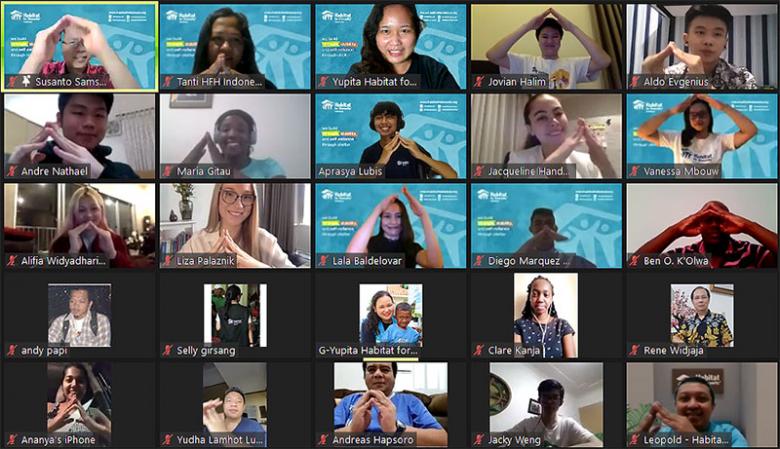
Screenshot of Habitat Indonesia’s ‘RUMAH’ event via Zoom.
The following week, Habitat Indonesia co-hosted a virtual “HFI Volunteer Appreciation Night” with Humanitarian Forum Indonesia, a collaboration of non-governmental organizations. About 50 people joined the online event (in Bahasa Indonesia) that aimed to highlight youth volunteering activities that support humanitarian efforts including responses to COVID-19 and disasters in the country.
Following the virtual event, Habitat Indonesia conducted the Chandra Asri leadership training for 80 people — all wearing masks amid physical distancing and other measures — in Anyer, Banten. The participants drafted 16 project proposals that address their community’s concerns, namely the need to improve the youth’s employability and to promote the community’s agricultural products in online marketplaces.
Philippines: seven campus chapters based in Metro Manila organized a webinar, “Beyond the Concrete,” ahead of the campaign launch to highlight the impact of housing from a multi-sectoral perspective and to empower the youth to take action. The spotlight also turned on a student-initiated fundraising drive, “Bigay Bukas”. Funds raised will be used to help provide school supplies and tools to support distance learning of children living in communities where Habitat works.
On December 5, a video featuring young leaders making the case for the cause of housing kicked off the campaign. “What we are building is not just the houses for people to live in but also the community they can stay and also the opportunities for their future,” said Rita Galvez, president of Habitat’s University of the Philippines Diliman campus chapter.
Video screenshot of Rita Galvez. She also stated that a home is a basic necessity.
The multi-month #HabitatYLB campaign will continue with a regional virtual volunteer conference in February 2020. Some of Asia-Pacific’s most passionate champions for the cause of housing will come together to discuss shelter issues and create action plans to mobilize the youth to support Habitat’s response to the COVID-19 pandemic in their countries. Follow Habitat Young Leaders Build on Facebook, Twitter and Instagram for more details.

